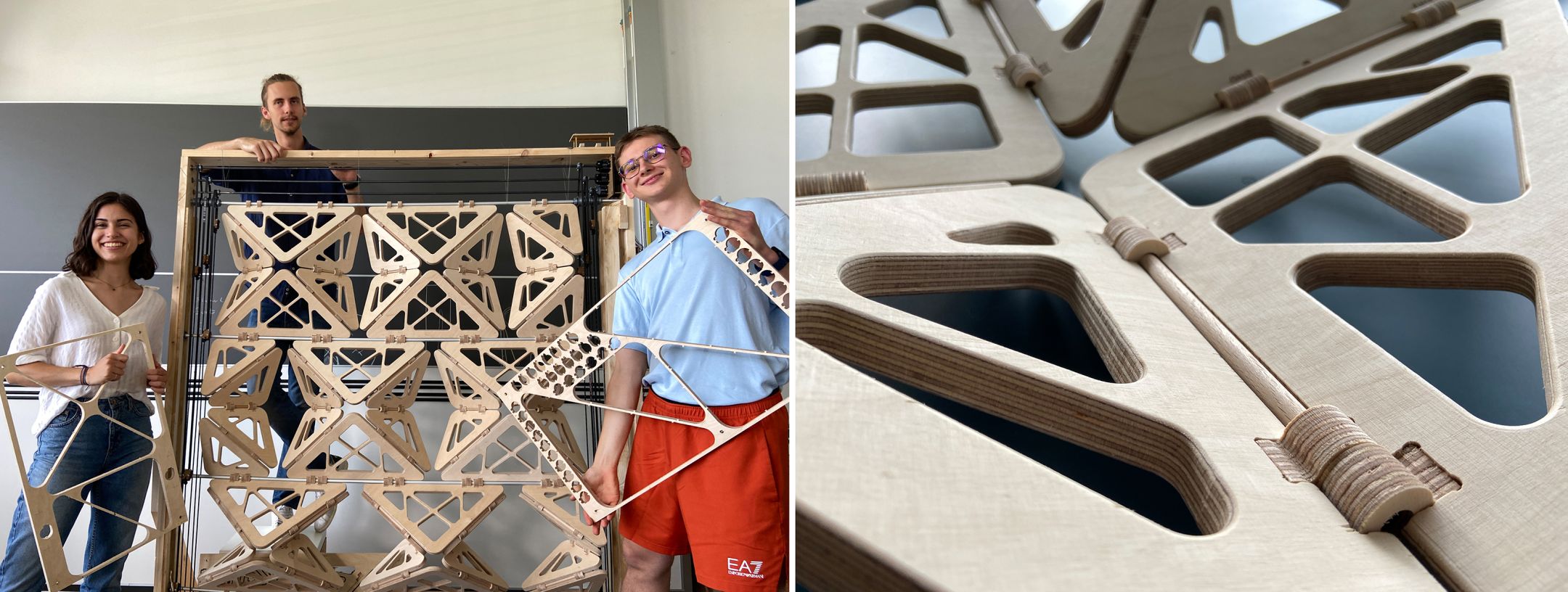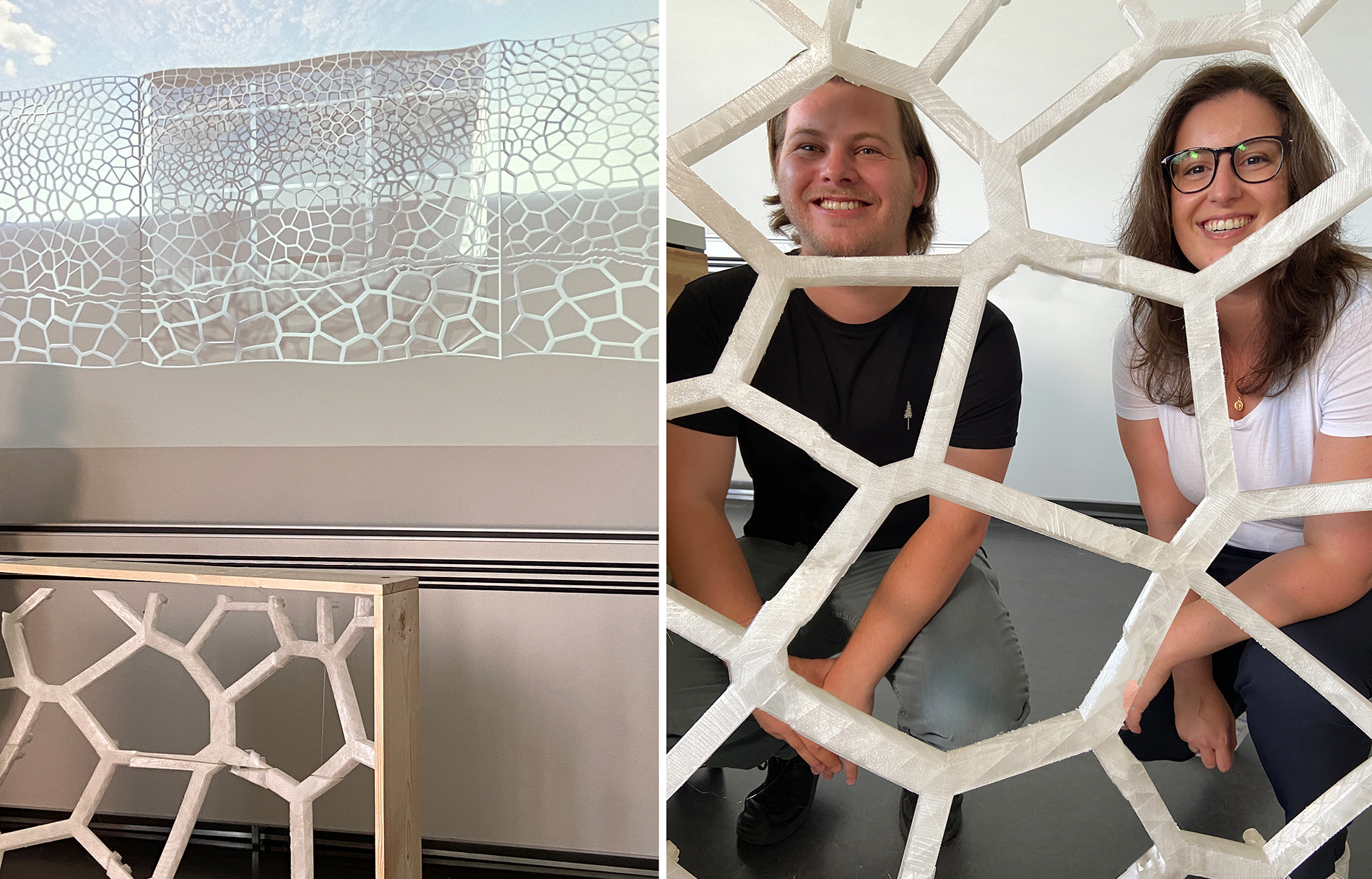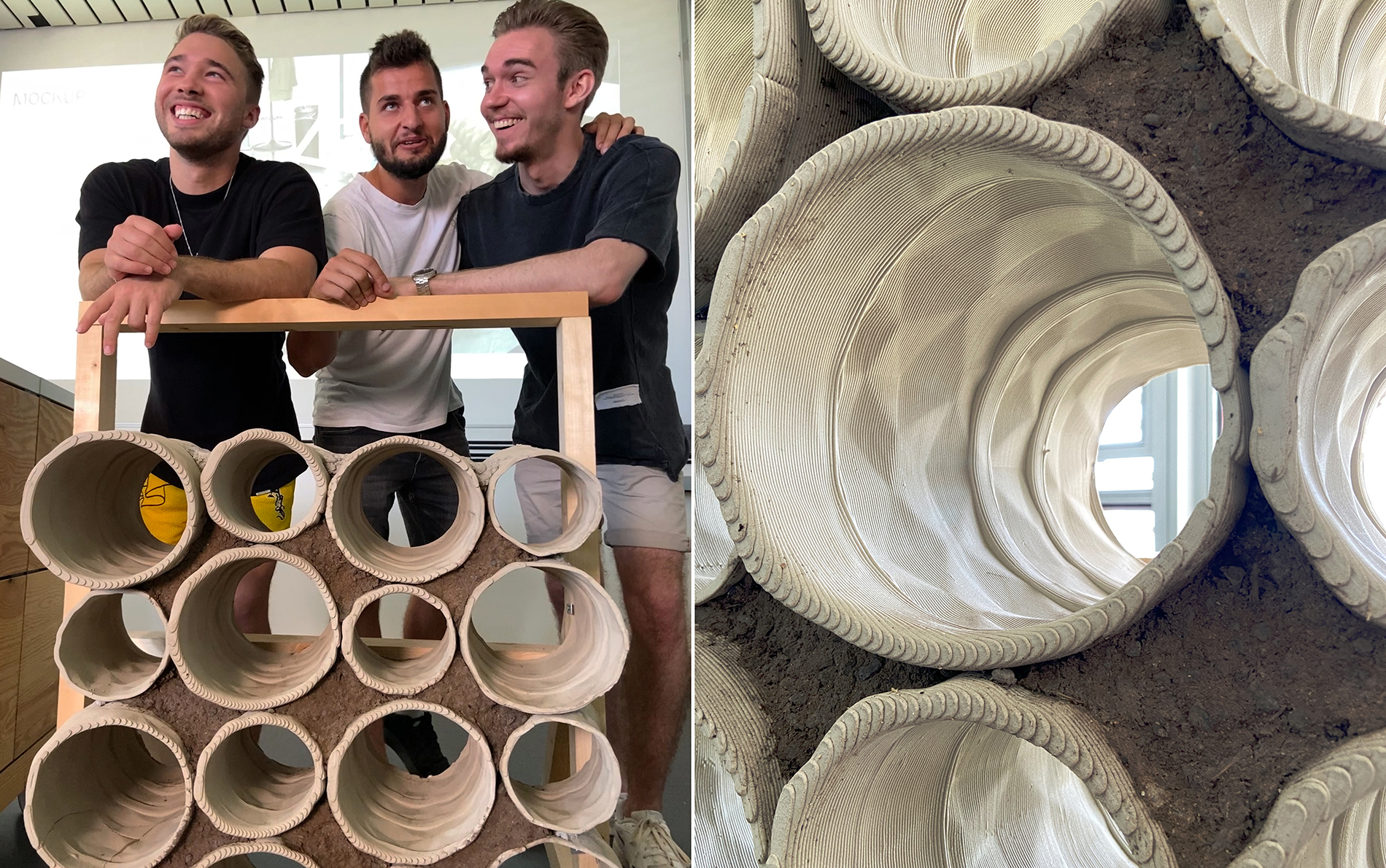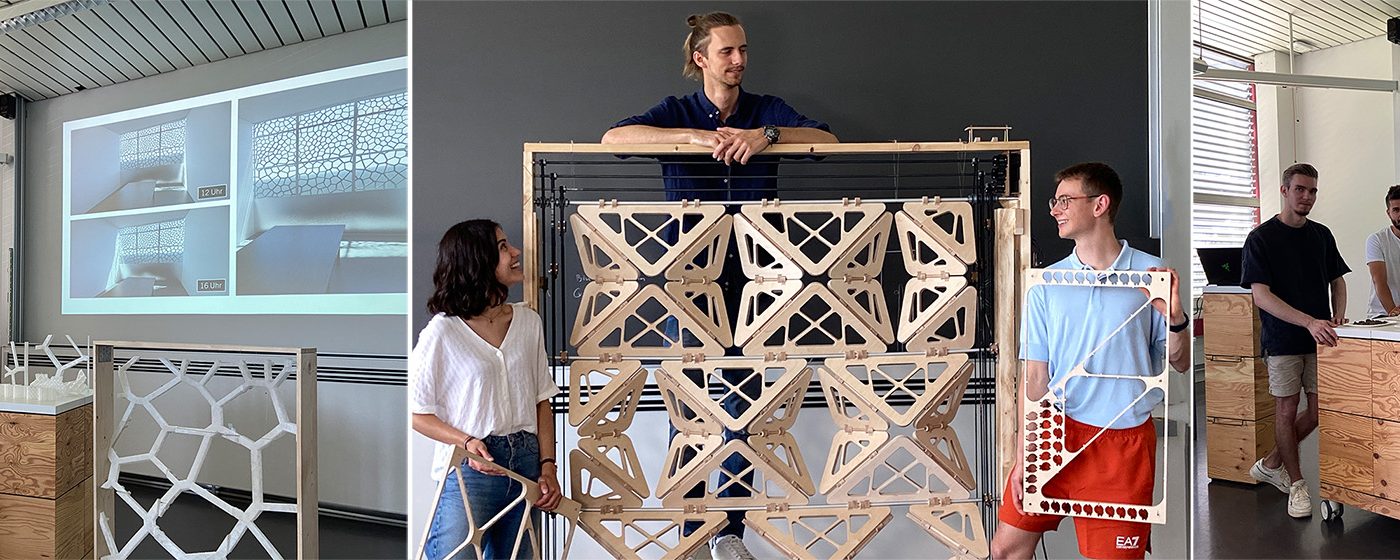How do digital methods influence the design and production of functional building envelopes – especially if they are to be made of predominantly one material?
These and other questions challenged the students of the new Bachelor’s programme ‚Digital Construction‘ at HSLU T&A in the spring term of 2022.
The student groups each had one material, clay – wood – plastic, at their disposal to design a functional second skin in front of an existing façade and to build a mock-up. The skin had to occupy a given space in three dimensions and also fulfil a daylight respectively anti-glare function in a defined area of the interior. The use and benefits of digital methods and tools for design, analysis and production had to be examined in order to solve the task. A complex challenge in the short time of only 4 months. The students mastered this challenge fabulously, dealing also with the peculiarities of material characteristics, production methods and design tool complexity.
How does one manage to print 3D forms from clay that meet the requirements and retain the desired shape until the firing process? What are the pitfalls of the 3D printing processes of ceramic or plastic printers? What are those of CNC mills? How does one manage to stay under 2kg of plastic material for a mock-up of more than 2 m² and still fulfil the structural and functional tasks? How do kinetic components interact with each other and how can the necessary mechanisms be implemented? What tools are needed to control them? Many questions had to be mastered.
The students not only acquired a lot of new knowledge about the various processes in parametric design and modelling, digital production and smart algorithms when using different materials, but also complementary knowledge about kinetic technologies or intelligent control systems when they entered the world of Arduino or actuation technology.
The supervisor team Oliver Zirkelbach, Susanne Gosztonyi and Thiemo Fildhuth as well as the programme directors Mark Baldwin and Markus Weber congratulate the students on their successful results. A great start to the new module!




Video Summary of DC Studio 3, Term 2022 // Switchtube
